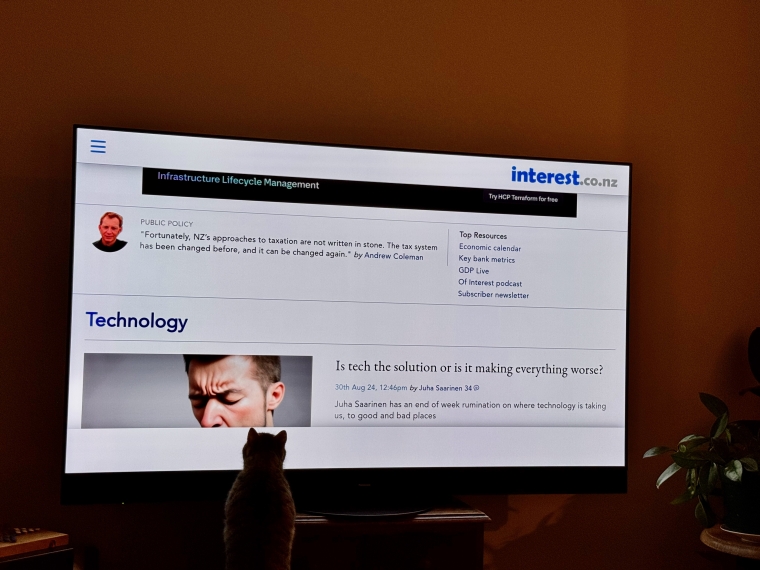
Japanese technology giant Panasonic, which makes everything under the sun (I can recommend their excellent rice cooker for example), released a new range of TVs this year; I was sent with what is probably the very best set of the lot, and some weeks in, I remain very impressed with the TV.
The 65-inch set I have is called… wait for it, wait for it… TV-65Z95AGZ. Luckily, that’s abbreviated to Z95A with the 65 being for the same number of inches because that’s how we measure the diagonal of the screens in 2024 still.
Design-wise it is a big black screen. The point of it is to not get in the way of the viewing experience, so no blinking lights or buttons, and what have you.
A new Z95A will set you back $6300 including GST for that is the recommended retail price.
Setting up the Z95A was that much easier with assistance from my son. It’s not that heavy and in fact quite thin. But, 65-inches is BIG to handle, and I wouldn’t recommend going solo on the set-up for that reason. Drop it and you’ll be a sad turkey for your 4K TV hoojam, basically.
For completeness, the dimensions of the Z95A are:
- Height: 910 mm (including pedestal)
- Width: 1448 mm
- Depth: 350mm
- Weight: 30.5kg
In terms of physical effort, the setup was a matter of mounting the panel carefully on the pedestal for the TV, following the instructions by the letter is recommended, so do that, plugging it into the broadband connection, powering up, and let it update and finish configuring itself.
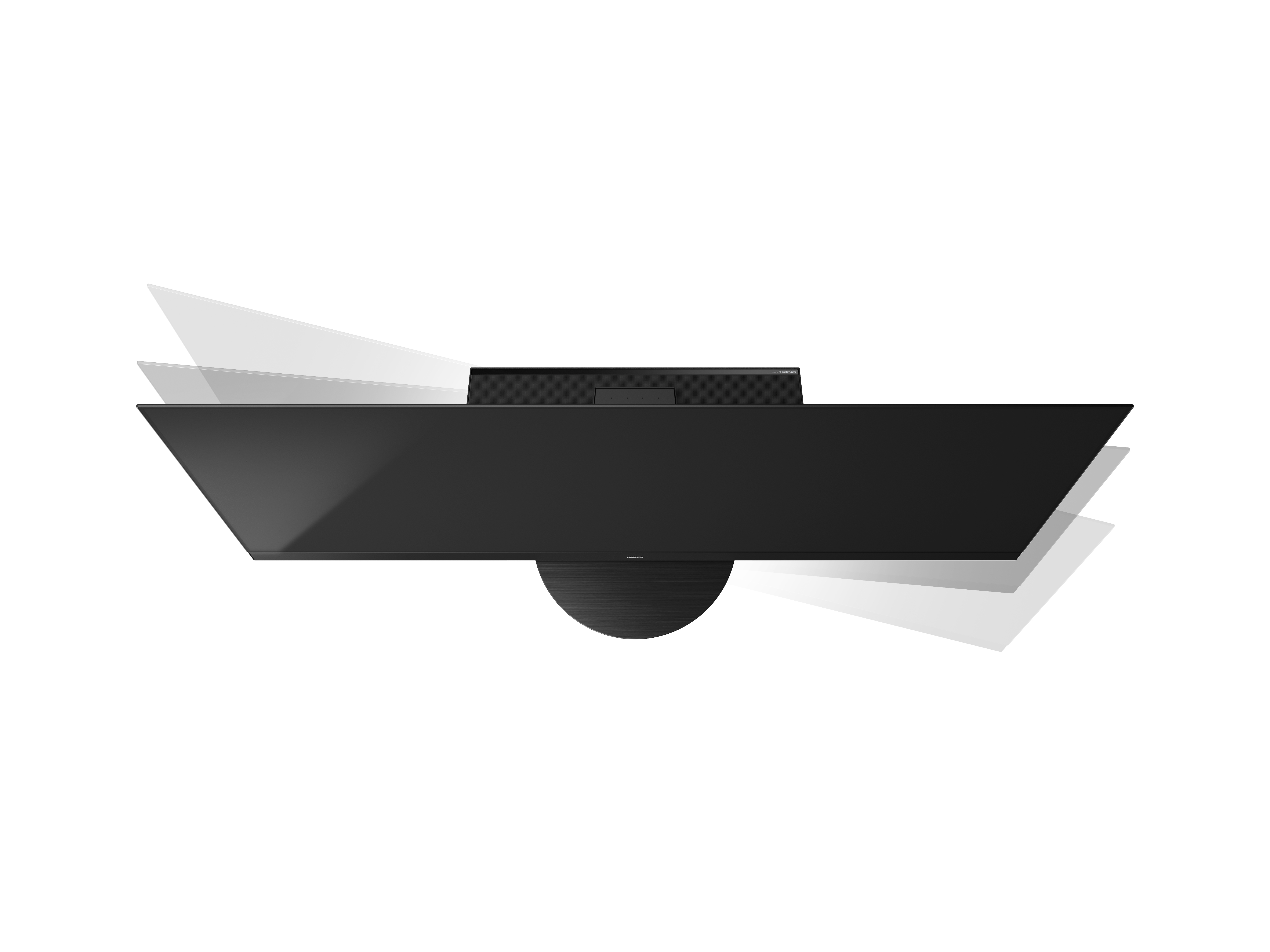
Commendably easy, with only a minor glitch getting in the way that resolved itself after trying again. The set is calibrated out of the factory for image quality and comes with the UHD Alliance’s Filmmaker Mode. This setting turns off all the post-processing on the TV, the idea being that you’ll get to watch movies as the director and crew intended.
If you do want to calibrate the Z95A it has a vast amount of options to choose from, to arrive at the desired image settings. A custom plus two professional image modes are available for that, as befits a high-end set like the Z95A.
Billions of little micrometre size lenses on the panel
Master OLED Ultimate sounds like the honorific for a kid who was given an unfortunate name by his parents, but it actually refers to the panel configuration for the Z95A.
That means the Korea-made LG panel in question that Panasonic uses an invention called Micro Lens Array or MLA. Apparently there are 29 billion (I didn’t count them) little lenses on the screen, and their job is to boost the brightness of the panel.
Along with increased brightness, MLA improves the viewing angles of the panel, to 160 degrees. All without compromising the traditional strengths of OLED which are the “no-light blacks” (the pixels can be turned off completely so you don’t get that slight greyness of other LED technologies) and excellent contrast. The MLA-equipped Master OLED Ultimate displays are found on the 65 and 55-inch variants of the Z95A, and I'd say that's the panel to go for in the Panasonic range.
There’s software and hardware magic required as well of course, with the digital imagery going through the new HCX Pro AI Processor Mk II which is quite an unwieldy name. The chip has a neural network inside that’s been trained to recognise different content and automatically adjusts how it’s displayed.
And, the technology works. I expected the Z95A to be good because it simply has to be for the amount of money that Panasonic quotes as the retail price. Even then, the image quality took me by surprise and made me realise that my existing TCL set with MicroLED technology that I thought was OK is… quite meh in comparison. OK, it’s a few years old by now and didn’t cost anywhere near as much, but wow, the Z95A is in a different league.
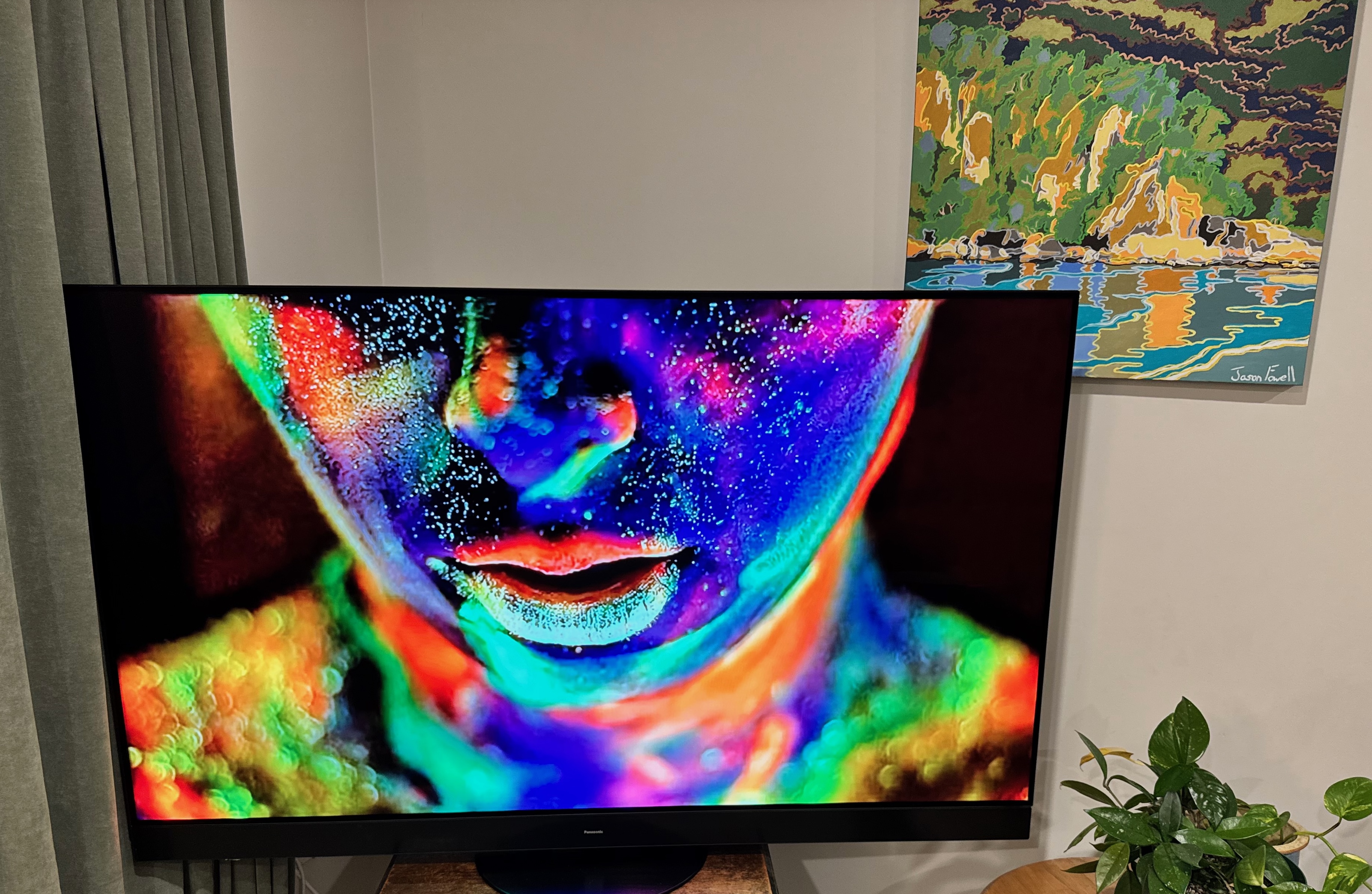
Without seeing it yourself, it’s hard to appreciate how good real-life movies look on the Z95A’s OLED panel, particularly so with dark scenes; well, most everything I’ve viewed on the TV looks great. That includes upscaled 1080p films as well. The cheapest Netflix which is 720p is a bit marginal though, as there’s only so much digital magic can help with upscaling low-res content to 4K.
Thanks to the MLA, the screen is fine to watch without pulling the curtains in the room, and reflections are pretty minimal too.
There are no fewer than 16 image settings, including an adaptive and calibrated one for Netflix. With HDR10+ and Dolby Vision IQ movies the image quality is stunningly good. So much so that the family members were totally impressed by it and have now monopolised the viewing which wasn’t the expected outcome at all.
The Z95A can do up to 144 Hertz refresh rates, so I really need to hook up a gaming computer to the Z95A to see what it looks like. For gaming, the Z95A supports two relevant acronyms: ALLM which stands for automatic low latency mode and VRR which means variable refresh rate. Both make a difference for video gaming, along with Nvidia G-Sync and AMD FreeSync.
To hook up a console or computer, there are HDMI (High Definition Multimedia Interface, natch) ports, two of which are the newer 2.1 standard, and one of them supports the audio return channel (ARC/eARC) for soundbars. Other than that, there are USB ports too, but not of the newer Type-C variety.
Do you need to use a soundbar or a separate audio system then? Probably not; read on.
Technics tuned sound included
Panasonic has equipped the Z95A with what it says is a 160 Watt Dolby Atmos sound system which is quite a bit of output for a TV. I’m not convinced you can just add up the output of all the amps though, but here’s the configuration:
Front array with 80 W, two side speakers with 15 W, two upwards facing drivers, also 15 W, and a bass woofer with 20 W. Plus, two mono woofers with passive sound radiators. They support different sound modes, including an “Auto AI” one, and two games oriented settings plus a user customisable one.
The Auto AI works pretty well and the TV can calibrate it during set up with sound signals, providing a spatial audioscape. It’s pretty clear for dialogue, and has realistic sound rendering overall. If anything, you might want to turn down the bass a bit as it can get a little boomy.
Panasonic said Technics which it owns, and is a brand from decades ago that still makes HiFi amps and turntables, tuned the sound on the Z95A. Like the image quality, the Technics-tuned audio is a pretty good effort, promising 360-degree sound (OK, that’s probably over-egging it). Soundbars are very much optional in the Z95A scenario.
All the buttons, the remote has so many
To drive the Z95A, there’s the remote. The magic wand has lots of buttons with cryptic symbols which, while they provide full control over the TV features, make the remote feel like a step back in time. Please see:
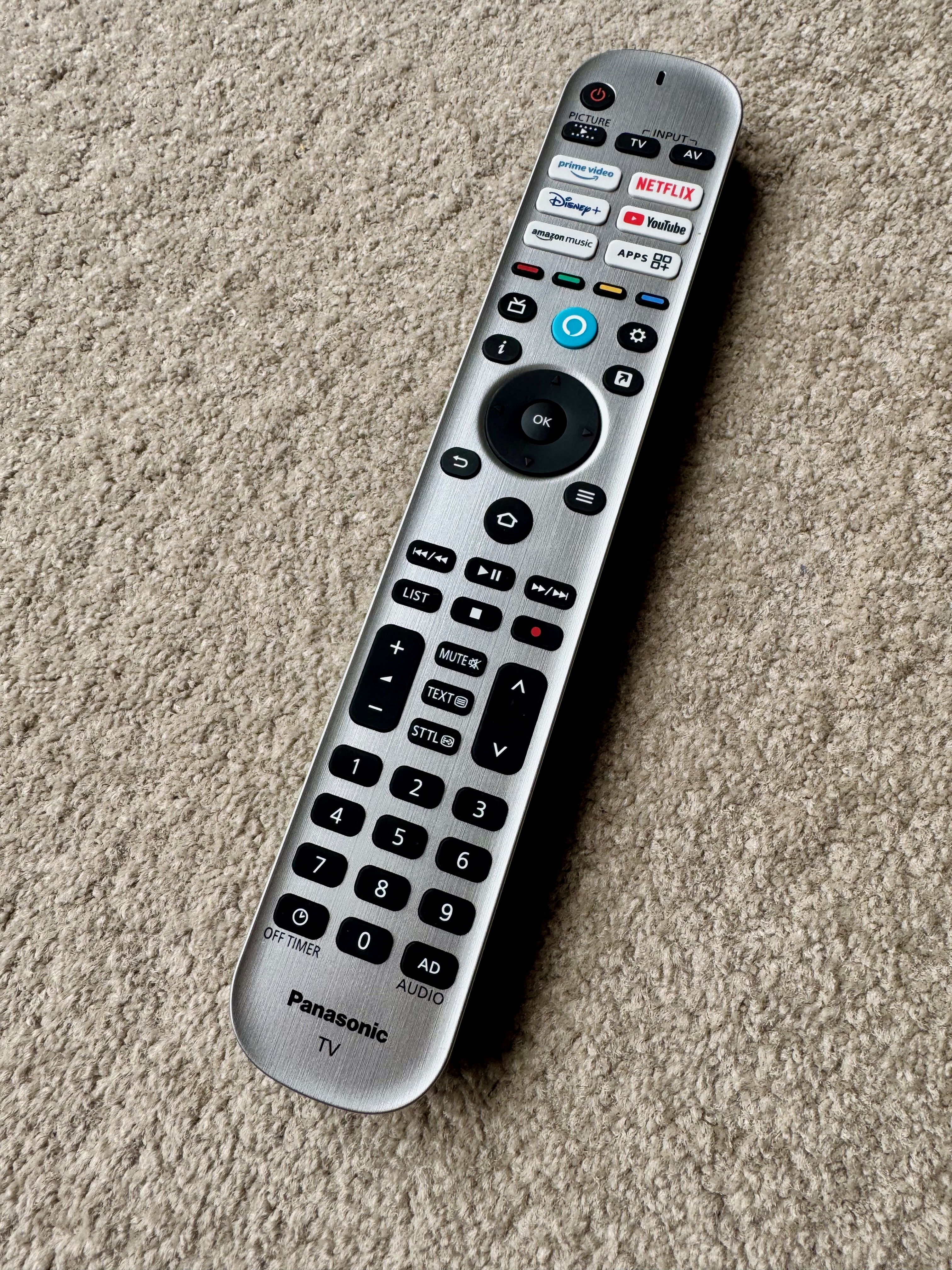
Takes a bit of time to figure out which button does what, in other words. Or, you could just go down the Amazon Alexa route, and use voice commands and the Fire TV smartphone app which looks like this:
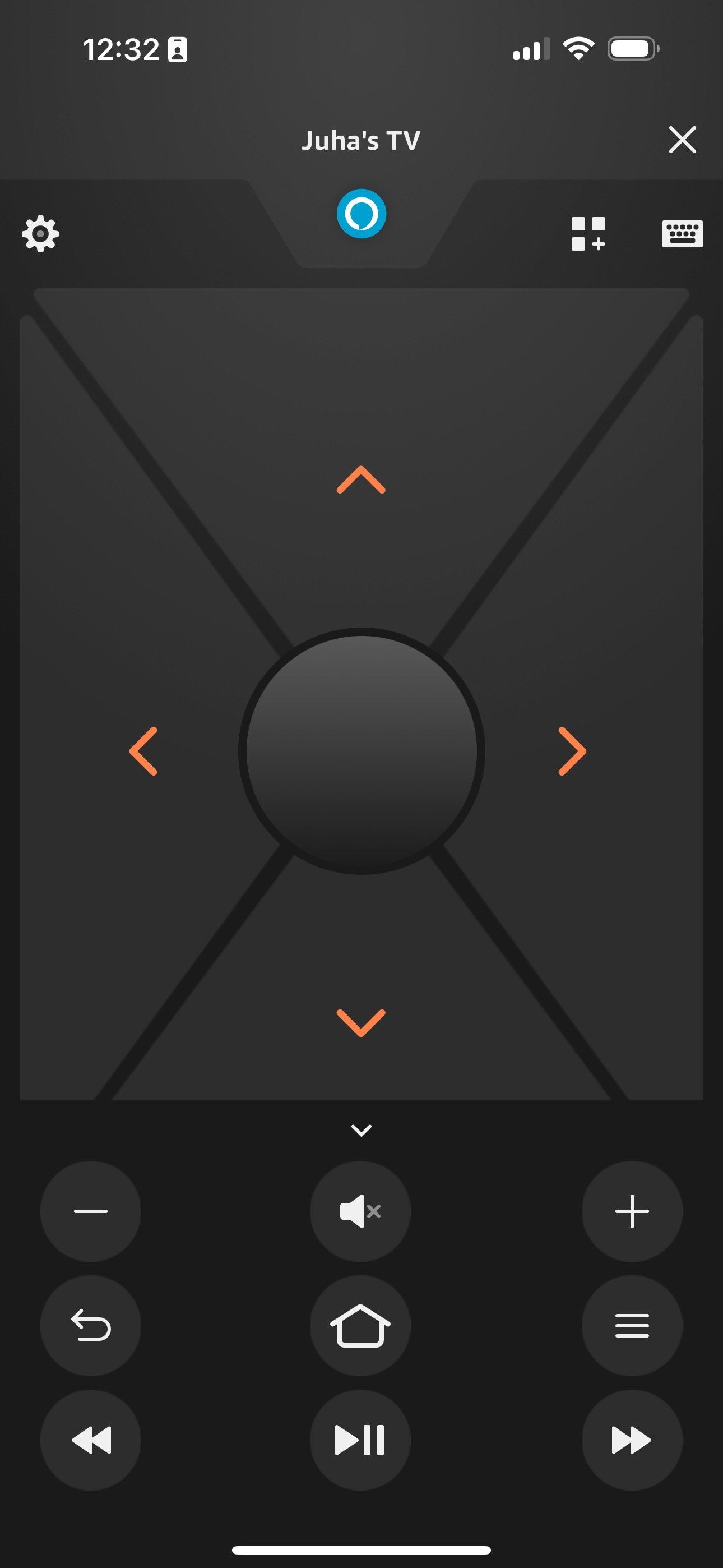
Deep Amazon integration
Panasonic decided to go with Amazon as its drawcard for movies and music for the latest range of TVs.
That doesn’t mean other platforms are excluded: Netflix, Disney+, YouTube, Apple TV+, TVNZ, Plex, Freeview and others are also integrated and have their own buttons on the remote. You can add them as apps via Amazon.
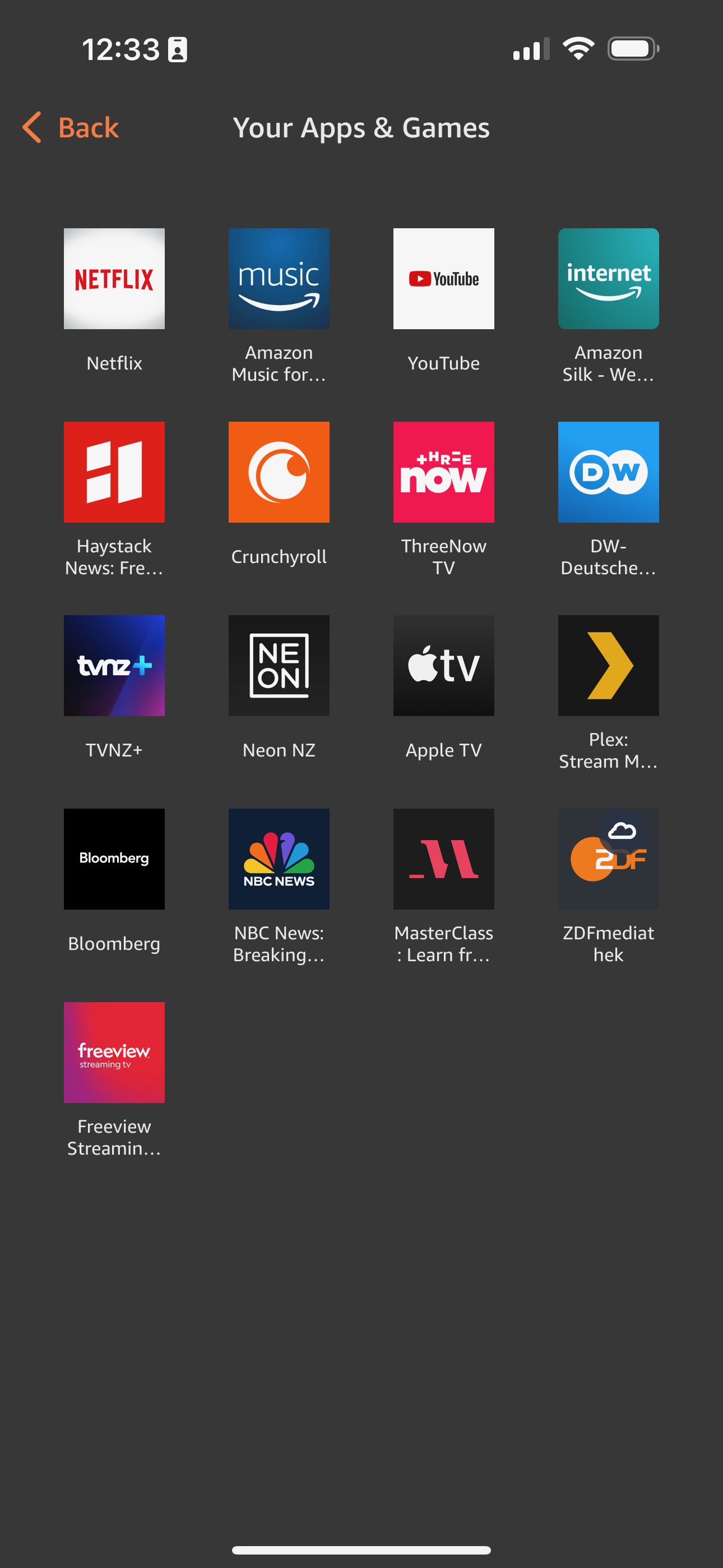
However, Amazon gets pride of place. Amazon inside brings the Alexa ecosystem to the TV, so you can view Ring video bells and shop online. Also, you get spammed with subscription offers to Prime TV and Amazon Music so beware the kids don’t work out how to sign up your account for all of that.
In fact, not just for Amazon but other subscription services that the TV offers. There are safeguards and notifications to stop frivolous sign-ups, but I was still billed for Prime TV by one of the kids pressing the right buttons. I might need to set up a burner account for the TV.
Speaking of subscriptions, wouldn’t it be nice if a pricey TV like the Z95A came with a year’s worth of Prime TV at least? Because it doesn’t.
The Z95A also runs the Google Android based Amazon Fire TV operating system, but the set gets on just fine with Apple devices.
Now, $6300 is quite a bit of coin for most people - OK, for the writer it is then - but the Z95A is remarkably good. Once you’ve seen it, there’s no way to un-see the excellent image quality and go back to less capable TVs.
Update Late in the game, I've found an annoying "misfeature" on the Z95A: the wired Ethernet network interface is only 100 megabits per second. Not a gigabit, as you'd expect in 2024-25. Gah. Weirdly enough, the TV supports 6 GHz Wi-Fi (802.11ax), and having set that up, I see a line speed of 1.2 Gbps. Go wireless in other words.
3 Comments
Yes Panasonic.. For ever.. Quite remarkable when you think that this is a huge company that makes all things for all people.. Yes I do own a Panasonic TV
I also have always had Panasonic TVs,& I would like to upgrade from 55' to 75'-mainly because we have a very large lounge with surround sound.It all comes down to what your budget is,if you want the very best picture & technology,& you are happy to pay for it - these models are what you want.I didn't want to spend that amount but still have a large 75' with excellent picture & technology in a Panasonic mini led for approximate half the cost of these OLED TVs.
TV's seem to cost a lot of money

We welcome your comments below. If you are not already registered, please register to comment
Remember we welcome robust, respectful and insightful debate. We don't welcome abusive or defamatory comments and will de-register those repeatedly making such comments. Our current comment policy is here.